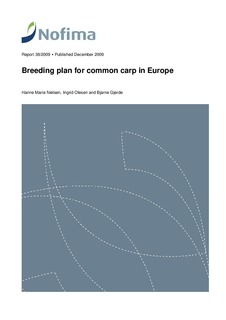| dc.description.abstract | In this study we present an outline for a selective breeding plan aiming at producing a population of common carp with a high growth rate, a high survival rate, and which is highly resistant to Koi herpes virus (KHV) and the bacteria Aeromonas hydrophila. Different breeding strategies differing in information sources in the selection index and weightings of the traits in the breeding goal were compared. Estimates of heritabilities and genetic correlations were those reported in the EU project EUROCARP (EUROCARP, Project no. 022665). The four traits growth and survival until market size, and resistance to KHV and A. hydrophila were included in the breeding goal. Almost the same response in A. hydrophila was obtained when selecting for resistance for KHV only compared to selection for resistance to both KHV and A. hydrophila. This was due to a low heritability for A. hydrophila and a high genetic correlation between resistance to KHV and resistance to A. hydrophila. The structure of a selective breeding program for common carp should follow the general structure for large-scale breeding programs for aquaculture species, which is divided into breeding nucleus, multipliers and grow out units. A family based selective breeding program is suggested where each of 100 males are mated with two different females to produce 100 half-sib and 100 full-sib families. For each trait, 20 individual should be tested for each full sib family. After tagging, the fingerlings should be communally stocked and reared under commercial grow-out conditions for performance testing. The selective breeding program for common carp should be based on index selection with combined individual and sib selection. Individual body weight and survival should be recorded at second autumn. In order to select for resistance to KHV, challenge tests with separate, tagged individuals from the full-sib families in the breeding nucleus should be performed. Altogether, selection for improved pond survival, resistance to KHV and A. hydrophila will contribute to develop a more robust common carp for farming. | |
